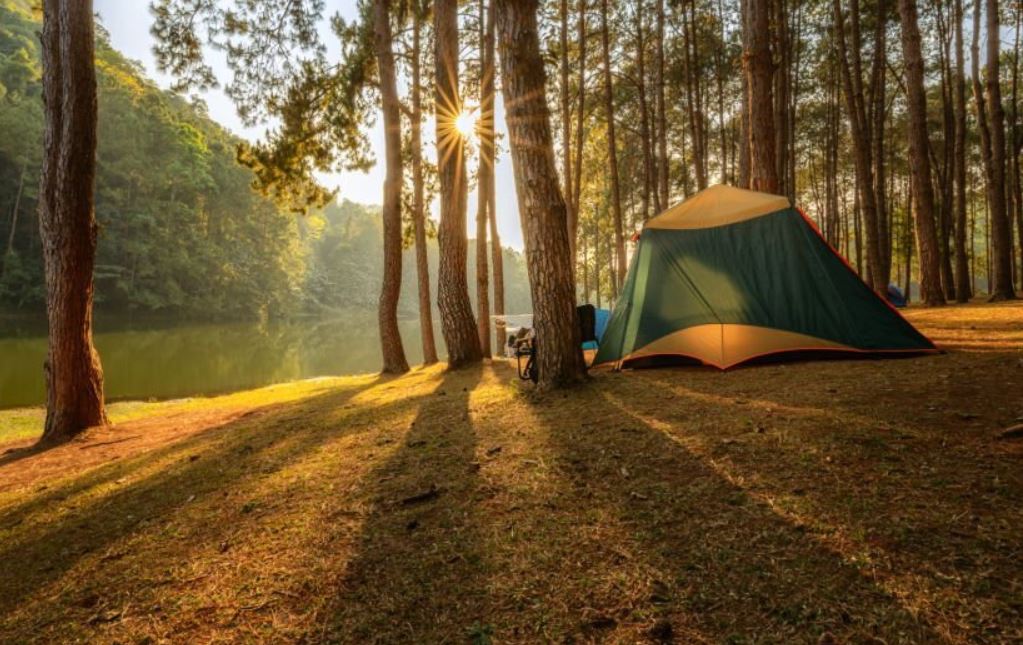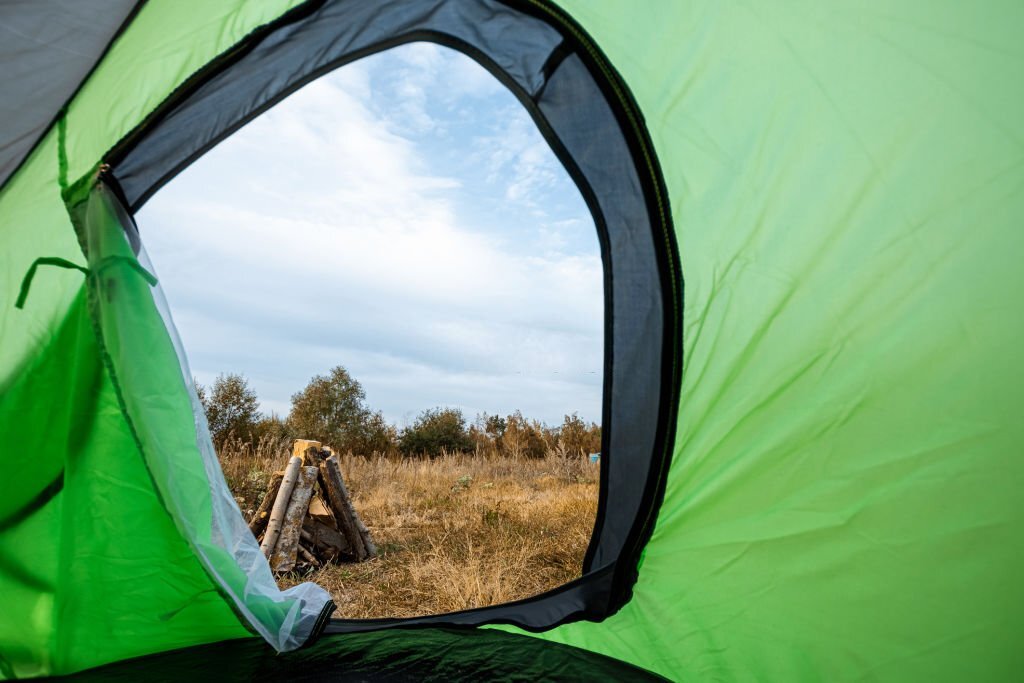Welcome to our ultimate guide on how to prevent condensation in a tent! Whether you’re an experienced camper or a beginner, battling condensation inside your tent can be a real challenge. Waking up in a damp and clammy sleeping environment can ruin an otherwise fantastic outdoor adventure.
But fret not! With our expert tips and practical solutions, you can bid farewell to the pesky condensation woes and enjoy a cozy and dry camping experience.
Condensation Issue in Tents
Condensation is a common issue that campers often face when using tents, especially in certain weather conditions. Understanding condensation and taking measures to minimize its impact is essential for a more comfortable camping experience.
Condensation inside a tent can be a frustrating and uncomfortable experience for campers, especially during cold or humid weather conditions.
Not only can it lead to a damp and chilly environment, but it may also cause water droplets to fall on your gear and sleeping area.
To ensure a pleasant camping experience, it’s essential to take proactive measures to prevent condensation.
In the details below, we’ll explore various strategies to minimize condensation in the tent and keep it dry and comfortable.
How to Prevent Condensation in A Tent?
Following is a list of factors that one must keep in mind to prevent condensation in a tent:
1. Selection of a Good Camping Site

The location of your campsite can significantly impact condensation levels inside the tent. Choose a site on elevated ground away from water bodies and low-lying areas.
Cold air tends to settle in low-lying areas, which can lead to increased condensation inside the tent. Camping on elevated ground promotes better airflow and helps disperse moisture.
Additionally, try to find a campsite that allows for good ventilation. Look for areas with natural wind barriers like shrubs or trees to protect your tent from strong winds, but avoid camping in completely enclosed spaces that restrict airflow.
2. Selection of the Right Tent

Selecting the appropriate tent is the first step in preventing condensation. Opt for a tent that offers good ventilation and breathability.
Double-walled tents, which consist of an inner tent with a mesh canopy and a rainfly, are generally more effective at managing condensation compared to single-walled tents.
The mesh panels in double-walled tents allow air to circulate and reduce the buildup of moisture.
When choosing a tent, consider the weather conditions you’re likely to encounter. If you expect to camp in areas with high humidity or during the rainy season, look for a tent with a rainfly that extends well beyond the tent body.
A larger rainfly provides better protection against external moisture and reduces the chances of water getting inside the tent.
3. Tent Ventilation

Proper tent ventilation is one of the most effective ways to prevent condensation. During the day, when the weather is warm, keep the tent doors and windows partially or fully open to allow air to circulate.
Mesh panels and vents provided by the tent design are specifically intended for ventilation purposes. Utilize them to promote airflow inside the tent.
If privacy or weather conditions don’t permit fully open ventilation, consider using the rainfly in a “porch” mode.
This means setting up the rainfly with one side elevated slightly, creating a gap that allows air to enter while still providing some protection from rain.
4. Internal Moisture Management
Activities inside the tent can contribute to increased humidity levels and condensation. Be mindful of actions that generate moisture, such as cooking inside the tent or hanging wet clothes.
Whenever possible, perform these tasks outside the tent or use the vestibule area if your tent has one. Cooking stoves that are used indoors and portable heaters can release a considerable amount of moisture into the air.
If you need to use them inside the tent, ensure proper ventilation by keeping windows and doors open.
5. Focus on Moisture-Absorbing Materials

The type of bedding and camping gear you use can also impact condensation. Insulate yourself from the cold ground by using a suitable camping pad or mattress.
Cold ground can cause moisture to condense beneath you, so a well-insulated barrier is essential. Additionally, choose sleeping bags and clothing made from moisture-wicking materials.
These fabrics draw moisture away from your body, keeping you dry and reducing the overall humidity inside the tent.
Placing moisture-absorbing materials inside the tent can help reduce humidity levels and minimize condensation.
Silica gel packets or moisture-absorbing crystals are commonly used for this purpose. They work by absorbing excess moisture in the air, helping to maintain a drier environment within the tent.
6. Air Drying Tent
Whenever possible, take advantage of sunny weather to air out and dry the tent. If condensation has accumulated inside the tent during the night, take the opportunity to let it dry before packing it up.
Wipe down any wet surfaces, and ensure the tent is completely dry before storing it to prevent mildew and mold growth.
7. Usage of Footprints
Tent footprints, also known as ground sheets or ground cloths, are protective layers placed underneath the tent to shield it from moisture and abrasion.
While some argue that using a footprint can increase condensation, others find that it helps keep the tent drier by providing a barrier between the tent floor and the ground.
Experiment with and without a footprint to determine what works best for your specific tent and camping conditions.
8. Dry Weather Camping
Cold nights with high humidity levels are more likely to lead to condensation issues. Additionally, camping in areas with significant temperature fluctuations or near bodies of water can enhance the problem.
While it’s not always possible, choosing to camp during drier weather conditions can significantly reduce the chances of experiencing condensation inside the tent.
Check weather forecasts and plan your camping trips during periods with lower humidity and little chance of rain.
You can also watch a helpful video by MyLifeOutdoors on how to stop condensation inside a tent.
The Final Lines
Preventing condensation in a tent requires a combination of thoughtful tent selection, proper site placement, effective ventilation, and careful management of internal moisture.
By applying these strategies, you can significantly reduce condensation and enjoy a dry and comfortable camping experience.
Remember that the ideal approach may vary depending on your tent type, weather conditions, and personal preferences, so don’t hesitate to experiment and find the best solution for your specific camping needs.

Hi, I’m Masab Jamal, the founder and head editor of this blog. I love to spend most of my time in the wilderness. Apart from camping and outdoor life, I’m a full time blogger.


Hey, Jack here. I’m hooked on your website’s content – it’s informative, engaging, and always up-to-date. Thanks for setting the bar high!